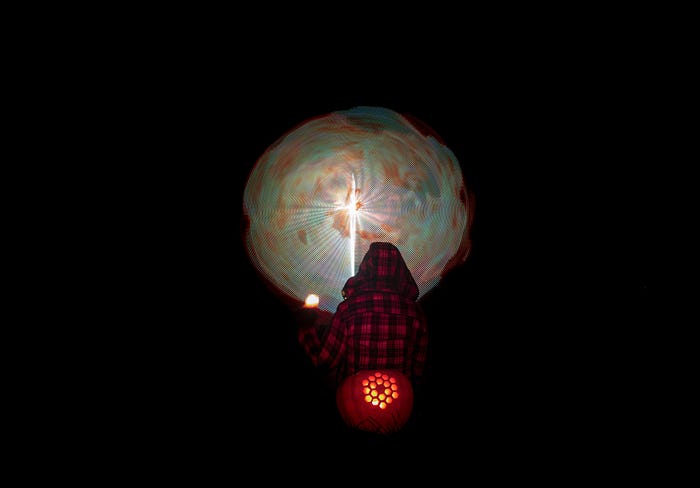The James Webb Space Telescope is taking STEM by storm.

From fashion and trends to hit television shows like Stranger Things — all faithfully recreating the eras in loving detail — the eighties and nineties are back.
For kids of that era obsessed with science and space travel, the launch of the Hubble Telescope was a golden ticket to a bold new world of exploration and wonder.
Space camp suddenly meant seeing into the farthest reaches of the Milky Way. Students who watched Hubble’s progress in science class grew up studying the STEM disciplines before they started going by that moniker, inspired by the improbable success of Hubble.
And the photos.
The first generation to get a glimpse of whatever might be “out there” grew up to follow in the footsteps of earlier generations of scientists, explorers, and space pioneers.
Eventually, some Hubble kids grew up to join the space race themselves. It was perhaps only natural that those inspired by the revelations of Hubble would want to see further.
And thus, the James Webb Space Telescope was born.
After years of planning, decades of research, and months of building, the James Webb was launched on Christmas Day, 2021. Webb’s photos have been wowing scientists and the curious ever since.
In October, this dispatch of a baby protostar, still ensconced in its blazing cosmic crib, drew universal acclaim.

“Hidden in the neck of this “hourglass” of light are the very beginnings of a new star — a protostar,” says NASA of the unbelievable image. “The clouds of dust and gas within this region are only visible in infrared light, the wavelengths that Webb specializes in.”
“This protostar is a hot, puffy clump of gas that’s only a fraction of the mass of our Sun,” explains NASA. “As it draws material in, its core will compress, get hotter, and eventually begin nuclear fusion — creating a star!”
One of the best things about Webb is how well it works with other telescopes, including Hubble. Taken together, these many measuring instruments give a much sharper picture of the universe.
“If this majestic landscape looks familiar, you may recognize the original. Hubble first captured the Pillars of Creation in 1995 and revisited it in 2014,” says NASA of the image below. “Webb’s latest view was taken in near-infrared light, which is invisible to our eyes. Seeing in infrared allows Webb to pierce through the dust and reveal stars galore.”

“Webb’s near-infrared image at right shows the same pillars, but they are semi-opaque and rusty red-colored,” says NASA. “The peaks of the second and third pillars are set off in darker shades of brown and have red outlines. The background is cast in darker blues and blacks, and stars in yellow and white of all sizes speckle the entire scene.”
Elsewhere in the universe, Webb is also working very well with others.

“These new versions of Webb’s first images combine its infrared data with X-rays collected by NASA’s Chandra X-ray Observatory, underscoring how the power of any of these telescopes is only enhanced when joined with others,” says NASA of the above image.
This view of a cluster of galaxies is a good reminder of how tiny our own Milky Way galaxy really is in the vast expanse of the universe.
Each of the five galaxies of Stephan’s Quintet appears to have something similar to our sun at the center, some seem to have more than one. These images are the clearest glimpse yet into a fascinating galactic neighborhood not far from where we live.
Students exploring the STEM fields after being inspired by Webb are often interested in much more than space travel.
Even our cosmic backyard holds many dangers, some increasing. From the threat of asteroid strikes to the future of warfare in space, there any many “real-world” applications of space exploration.

“Webb and Hubble both captured the effects of the DART mission colliding with an asteroid as a test of planetary defense,” says NASA of the rare event. “This is the first time both telescopes observed the same target at the same time.”
With the information scientists have gathered from both telescopes, they hope to someday be able to identify more asteroid threats to the earth.

“Just 3 million light-years from Earth, WLM is considered a dwarf galaxy in our galactic neighborhood,” explains NASA of this comparison. “While it is close, it’s much more isolated than other nearby galaxies, which interact with our own Milky Way.”
“WLM also has a similar chemical makeup to galaxies in the early universe, meaning it’s poor in elements heavier than hydrogen and helium,” continues NASA. “Because WLM is small and low-mass, supernovae (star explosion) events can be powerful and energetic enough to expel heavier elements out of the galaxy.”
The above comparison of images from Webb and other telescopes includes a gauntlet thrown down for the next generation: “This highlights data from Webb science in progress, which has not yet been through the peer-review process,” challenges NASA.
Every inch of Webb’s journey, NASA has helped make the telescope project a part of the lives of students around the world; from its construction and launch to the first photo dispatches and beyond.
With art contests, poetry challenges, and a mountain of photos on their Flickr site, the James Webb Space Telescope has made science fun again.
So, carve a pumpkin or peer review data from the James Webb Space Telescope; the next generation of scientists, from K-12 and beyond, is being inspired to new heights by NASA.

(contributing writer, Brooke Bell)